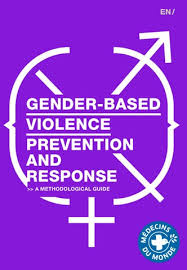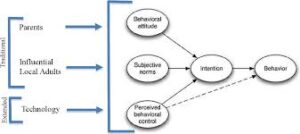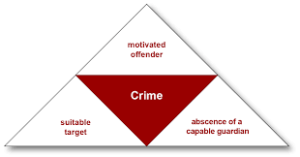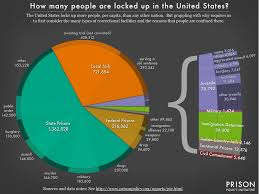Introduction

Victimization prevention indeed plays a crucial role in addressing and mitigating crime. Here’s why it’s considered an effective tool:
Focus on Root Causes
Victim prevention programs often target the root causes of crime, such as poverty, inequality, lack of education, and social exclusion. By addressing these underlying factors, they aim to reduce the likelihood of individuals engaging in criminal activities in the first place.
Empowerment and Education
Many victimization prevention initiatives focus on empowering individuals and communities through education, skill-building, and access to resources. By providing people with the necessary tools and knowledge to protect themselves, these programs can reduce their vulnerability to victimization.
Community Engagement

Victim prevention often involves active participation from community members, law enforcement agencies, social service organizations, and other stakeholders. By fostering collaboration and communication within communities, these programs can create a supportive environment that discourages criminal behavior.
Early Intervention
:Victim prevention strategies often emphasize early intervention, targeting at-risk individuals before they become involved in criminal activities. By identifying and addressing risk factors early on, these programs can help steer individuals away from a path of criminal behavior.
Promotion of Safety Measures
Victim prevention initiatives promote various safety measures, such as installing security systems, improving lighting in public spaces, and implementing neighborhood watch programs. By enhancing security and creating a sense of collective responsibility for safety, these measures can deter criminals and reduce opportunities for victimization.
Trauma-Informed Approaches

Many victimization prevention programs adopt trauma-informed approaches that take into account the psychological and emotional needs of victims. By providing support and resources to victims of crime, these programs can help mitigate the long-term impacts of victimization and reduce the likelihood of re-victimization.
Victimization prevention indeed plays a crucial role in reducing crime rates. By addressing the root causes and vulnerabilities that lead individuals to become victims, society can effectively deter criminal behavior. Prevention strategies can encompass various approaches, such as:
Education and Awareness
Teaching individuals about personal safety, risk awareness, and how to recognize and avoid potentially dangerous situations can empower them to protect themselves.
Community Program

: Initiatives that foster a sense of community, such as neighborhood watch programs or community policing efforts, can enhance social cohesion and make neighborhoods less attractive targets for criminals.
Target Hardening
Implementing physical security measures, such as installing alarms, security cameras, and improved lighting in public spaces, can make it more difficult for criminals to commit crimes.
Social Services and Support
Providing support services to vulnerable populations, such as victims of domestic violence, at-risk youth, or individuals struggling with substance abuse or mental health issues, can help address underlying factors that contribute to victimization.
Legislation and Policy
Enacting laws and policies aimed at reducing risk factors associated with victimization, such as stricter gun control measures or regulations targeting cybercrime, can help prevent crimes from occurring in the first place.
While victimization prevention is an essential component of crime reduction efforts, it should be complemented by other strategies, such as law enforcement, rehabilitation programs for offenders, and addressing socioeconomic inequalities, to create a comprehensive approach to crime prevention and community safety.
Victimization prevention involves a multi-faceted approach aimed at reducing the likelihood of individuals becoming victims of crime. Here are some additional details on how victimization prevention can be an effective tool against crime:
Early Intervention Program
: Investing in early intervention programs that target at-risk individuals, such as troubled youth or families living in high-crime neighborhoods, can help prevent the onset of criminal behavior. These programs may include mentoring, counseling, and educational support to address underlying issues and steer individuals away from a life of crime.
Empowerment and Resilience Building
Empowering individuals with the knowledge, skills, and resources to protect themselves can make them less vulnerable to victimization. This includes teaching assertiveness, self-defense techniques, and conflict resolution skills, as well as promoting resilience and coping strategies to deal with adversity.
Targeting High-Risk Environments
Identifying and addressing environmental factors that contribute to crime and victimization is essential. This may involve improving physical infrastructure, such as repairing broken streetlights or cleaning up neglected areas, as well as implementing community development initiatives to revitalize distressed neighborhoods and reduce social disorganization.
Promoting Healthy Relationships
Educating individuals about healthy relationship dynamics and recognizing the signs of abusive behavior can help prevent domestic violence and other forms of interpersonal victimization. Providing support services for victims and holding perpetrators accountable through legal measures are also critical components of preventing repeat victimization.
Collaborative Efforts
Effective victimization prevention often requires collaboration among various stakeholders, including law enforcement agencies, government agencies, non-profit organizations, community groups, and private sector partners. By pooling resources and expertise, these stakeholders can implement coordinated strategies to address the underlying causes of crime and victimization.
Data-Driven Approaches
: Utilizing data and evidence-based practices to identify patterns of victimization and prioritize interventions can maximize the impact of prevention efforts. This may involve conducting crime analysis, evaluating program effectiveness, and adapting strategies based on feedback and outcomes.
Promoting Social Equity and Justice
 Addressing systemic inequalities and social injustices is fundamental to reducing disparities in victimization rates. This includes addressing poverty, unemployment, inadequate housing, and discrimination, which can disproportionately affect marginalized communities and contribute to their vulnerability to crime.
Addressing systemic inequalities and social injustices is fundamental to reducing disparities in victimization rates. This includes addressing poverty, unemployment, inadequate housing, and discrimination, which can disproportionately affect marginalized communities and contribute to their vulnerability to crime.
By implementing a combination of these strategies, communities can create safer environments where individuals are less likely to become victims of crime, ultimately contributing to overall crime reduction efforts.
Crime Prevention Through Environmental Design (CPTED)
CPTED is an approach that focuses on designing physical environments in a way that reduces the opportunity for crime and increases the perception of safety. This can involve measures such as installing surveillance cameras, improving lighting in public spaces, implementing natural surveillance features like trimmed bushes, and controlling access points to deter criminal activity.
Safety Audits
Safety audits involve assessing the safety and security of a particular environment, such as a neighborhood or workplace, through systematic evaluations. This process often involves community members, stakeholders, and experts working together to identify potential risks, vulnerabilities, and areas for improvement. The findings of safety audits can inform the development of targeted interventions and prevention strategies.
School-Based Prevention Programs
Implementing prevention programs in schools can help equip students with the knowledge, skills, and resources to protect themselves from victimization. These programs may cover topics such as bullying prevention, internet safety, substance abuse prevention, conflict resolution, and healthy relationship education. By promoting positive behaviors and attitudes early on, schools can help prevent future involvement in criminal activities.
Victim Support Services
Providing comprehensive support services to victims of crime is essential for mitigating the impact of victimization and reducing the risk of revictimization. Victim support services may include crisis intervention, counseling, legal advocacy, emergency shelter, financial assistance, and referrals to other community resources. By addressing the needs of victims and helping them navigate the criminal justice system, these services can promote healing and empower individuals to move forward with their lives.
Public Awareness Campaigns
Public awareness campaigns can play a crucial role in educating the public about crime prevention strategies, raising awareness about emerging threats, and promoting community engagement in crime prevention efforts. These campaigns may use various media channels, such as television, radio, social media, and community events, to disseminate information and encourage proactive behavior among community members.
Technology and Innovation
Advancements in technology have led to the development of innovative tools and solutions for victimization prevention. This includes mobile applications for reporting crimes and accessing resources, predictive analytics for identifying high-risk areas and individuals, and electronic monitoring systems for tracking offenders. By leveraging technology, law enforcement agencies and community organizations can enhance their capabilities for preventing and responding to crime.
Conclusion
Overall, victimization prevention is an integral component of comprehensive crime prevention strategies, aiming to address both the causes and consequences of crime in order to create safer and more resilient communities.




